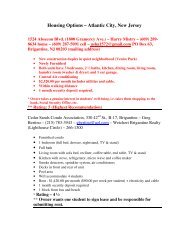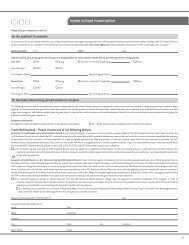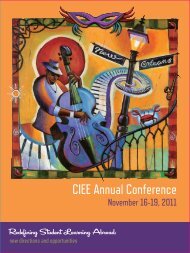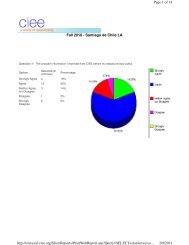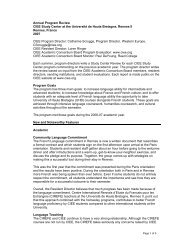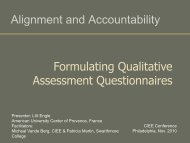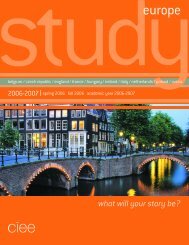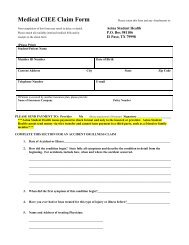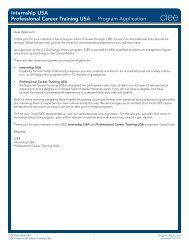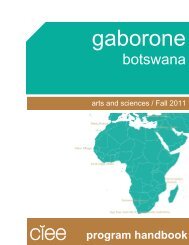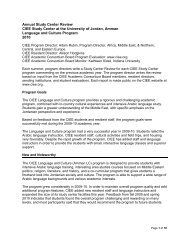Reverse Culture Shock
Reverse Culture Shock
Reverse Culture Shock
You also want an ePaper? Increase the reach of your titles
YUMPU automatically turns print PDFs into web optimized ePapers that Google loves.
Sadness that the host family is making plans beyond your stay<br />
Tendency to withdraw from the host family—it may seem easier to say goodbye if you do not feel as<br />
close to your host family<br />
Confusion about why the host family may be pulling away from you<br />
Honeymoon period initially when returning home—it is great to be back and to see everyone<br />
Difficulty becoming accustomed to your own culture<br />
Tendency to compare everything to the U.S.—others are not as interested in these comparisons<br />
Homesickness for the U.S<br />
Questioning interests and what to do next<br />
Feelings that no one understands what you are going through<br />
Feelings that you have changed, but people expect you to be the same<br />
Typical HOST FAMILY feelings and behaviors as a result of re-entry before and after departure:<br />
<br />
<br />
<br />
<br />
<br />
<br />
<br />
<br />
Sadness that the student is making plans for after he/she gets home<br />
Looking forward to some privacy<br />
Tendency to withdraw from the student—it may seem easier to say goodbye if you do not feel as<br />
close to the student<br />
Frustration that the student may be withdrawing from you<br />
Sense of relief once the student is gone<br />
Dealing with withdrawal—sense of grief at the loss of the student<br />
Questioning interests and what to do next.<br />
Feelings of loneliness; “empty-nest syndrome”<br />
Now that you have seen some of the typical feelings and behaviors to expect, students and host families can<br />
work together to make re-entry as painless as possible. Separation and letting go is never easy. However,<br />
with every end comes a new beginning and we hope that students and host families will feel enriched as a<br />
result of this experience.<br />
Following are some suggested coping strategies for both the student and the host family to utilize both<br />
before and after the student departs. Hopefully, if you put some of these practices in place, you will be<br />
prepared to face the challenges that re-entry presents.<br />
Coping strategies for STUDENT and HOST FAMILY while student is still in U.S.:<br />
<br />
<br />
<br />
<br />
<br />
<br />
<br />
<br />
<br />
<br />
Recognition and awareness of reverse culture shock—be aware of the typical stages<br />
Prepare yourself by thinking about how you have dealt with culture shock<br />
Communication—students and host families should discuss the inevitability of the student’s<br />
departure. When making future plans beyond the program, acknowledge that it may be difficult for<br />
the other party to hear about them<br />
Understand that the other’s behavior may be affected by reverse culture shock<br />
Students should keep in touch with family and friends back home (within reason)<br />
Students and host families should be aware of news, changes, and trends within the student’s home<br />
community, city, and country<br />
Take some time for introspection—consider how you have learned, changed, and grown from the<br />
experience<br />
Compare both cultures—student, consider what aspects of American culture you would like to take<br />
home with you—host families, consider what aspects of the student’s culture you would like to<br />
incorporate into your life<br />
Bring closure to your experience—say “goodbye” and “thank you”, make a scrapbook together,<br />
make plans for continuing your relationship<br />
Discuss expectations for the student’s return home and whether or not they may be realistic—<br />
consider on what terms you are all hoping to keep in touch<br />
Coping strategies for STUDENT and HOST FAMILY when student is at home:



